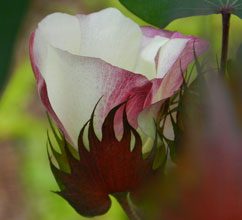To children, the holiday season may seem to take eons to return from one year to the next. As an adult, I can’t believe it’s already here. Time speeds up from Thanksgiving to Christmas faster than we can sing enough carols, hang enough greenery, make enough merry, spread enough joy, consume enough yummy seasonal goodies, and for many, take enough time to think about the reason for the season, whatever your faith or spiritual beliefs.
Here’s the thing: there’s an opportunity in the midst of the Christmas countdown for us to slide in a bit of expanded, contemplative time. Bear with me here.
From the Neolithic Period, near the end of the Stone Age, beginning around 10,200 B.C., people of many cultures have observed the end of shorter and shorter days and the return of more and more daily sun time. Initially, pagan celebrations featured fire and light as symbols of the longest night of the year – the winter solstice. Neolithic monuments, such as Ireland’s Newgrange, have been scientifically proven to be deliberately aligned with the rising sun on that particular day. One of the world’s best-known prehistoric monuments, Stonehenge, is oriented toward the winter solstice sunset. Ancient Romans reveled for a week prior to the solstice during a festival known as Saturnalia that honored Saturn, the god of agriculture.
Native American winter solstice practices differ from tribe to tribe. For instance, the Zuni Pueblo’s rituals that encompass all the Earth’s peoples reflect an ancient understanding of the connectedness of the world.
Of interest to religious and scientific circles, Spanish Colonials left distinct reminders of the importance of the winter solstice through illuminations at hundreds, or perhaps thousands, of Spanish missions from northern California to Peru. At dawn on December 21st, a ray of sunlight enters each church and bathes a significant religious icon, altar, crucifix, or statue of a saint in dazzling light, representing the rebirth of light, life, and hope in the coming of the Messiah.
As our own December holidays approach, these time-honored traditions validate the power of our instincts to guide us through the darkness toward the light.
This year, on December 21st at 4:48 p.m. ET in our area, the winter solstice heralds the official astronomical start of winter, the shortest period of daylight, and longest period of nighttime of the year in the Northern Hemisphere. (Just for the record, this pivotal event occurs on June 21st or 22nd in the Southern Hemisphere.) The winter solstice happens because the earth’s axis of rotation is tilted at its maximum 23.4 degrees relative to our planet’s orbit around the sun, thus creating the changes noted above, so that one half of the earth is tilted toward the sun and the other half away from it at the time of solstice. After December 21st, the days grow longer until the summer solstice in June, which marks the longest day of the year and the first day of summer.
It is believed that for thousands of years, pagan Germanic peoples celebrated Yule for 12 days around winter solstice. In modern times, Yuletide has been reformulated by Christians and renamed Christmastide. Today, this celebration retains many of the original customs, such as gift giving, lighting trees, and hanging holly and mistletoe.
According to the Farmer’s Almanac, we often think of the solstice as spanning a full calendar day, while actually, it’s the exact moment when a hemisphere is tilted as far away from the sun as it can be. “Although the winter solstice means the start of winter,” this long-revered reference states, “it also means the return of more sunlight. It only gets brighter from here.”
Now there’s a reason to be grateful.
Begun in 1898 as a promotional periodical for the Southern Pacific Railroad, Sunset Magazine has a few ideas based on ancient rituals as to how you can celebrate the winter solstice and add a bit of relaxing, back-to-nature time to the holiday hubbub. From Sunset’s pages, the following is from an article by Nena Farrell.
- Build a Yule Altar to honor the sun’s return – On it, place a gold, silver, or yellow candle as a symbol of the sun. Add wintry pine cones, evergreen boughs and wreaths, and perhaps a yule log. Cleanse the altar with sage or sweetgrass.
- Make an evergreen Yule Wreath for your door or your altar – In ancient times, evergreens represented protection and prosperity.
- Burn a Yule Log – In Nordic tradition, an entire tree was brought into a home to burn for the 12 days of Christmas. Either burn a log in your fireplace or play the Netflix video, “Fireplace for Your Home.” Aren’t you glad you live in this century of technological marvels?!
- Decorate a Yule Tree – Chances are you’ve already done this if your Christmas tree is up. Back when, Yule Trees were in actuality living trees rife with hanging candles. Along with any other decorations, these symbolized the sun, moon, and stars, as well as remembrances of lost loved ones.
- Exchange Nature-based Gifts – Forego Amazon and give a small handmade wreath, a plant-based candle, meaningful crystals, or seeds. Choose something sustainable.
- Give Back to Nature – As winter solstice is a time to celebrate the natural world, take time during the day to scatter seeds for birds and animals, and spend time outdoors.
- Celebrate in Candlelight – To honor the return of the sun in forthcoming months, cover a tabletop or your altar in unlit candles. Place one candle, preferably yellow or gold as the sun, in the center and above the rest of the candles. Light that candle first, then the others. If you choose, you can recite a ritual while doing this. This link has suggestions: https://www.learnreligions.com/welcome-back-the-sun-for-yule-2562985
- Cook for the Season – How about a warm, stick-to-the-ribs soup made with root vegetables, a thick bread pudding with bourbon sauce, and hot buttered rum or cocoa?
- Set Up a Meditation Space – Take time on the year’s longest night to think about what the new season and the new year might bring and what you’d like to manifest. The quietness of winter is a perfect time for reflection and inner growth.
Maybe, like Nobel Prize-winning author and philosopher Albert Camus, you can use this time of year to plant a seed of hope and peace in your life:
“In the depth of winter, I finally learned that within me there lay an invincible summer.”
Warmer days of sunshine, the greening marsh, and sea turtle hatchlings will come…they always do. Use Christmastime as a prep for a lighter 2023.








